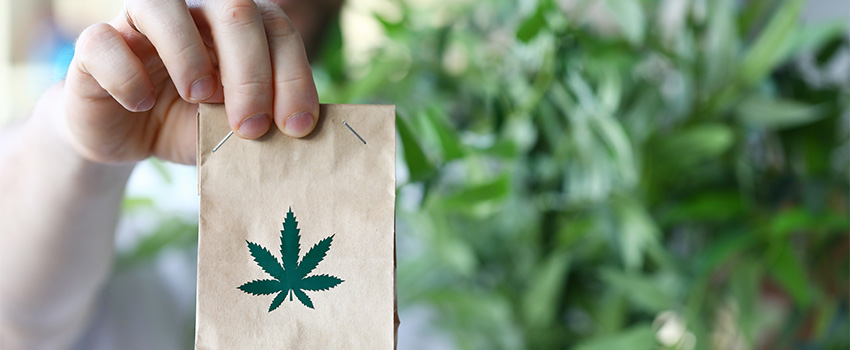

Table of Contents
As one of the most commonly used recreational drugs, cannabis is quite popular. It is more commonly known as marijuana, weed, or pot. Since its use not legal in all states in the US, people have invented a lot of weed names over time. In fact, there is probably not another substance with more street names than marijuana. Having different street names for weed has made its distribution easier worldwide. There is a seemingly endless list of marijuana street names, and they differ based on the country, age group, and several other factors. The list of nicknames for weed is said to include more than a thousand terms and can be very hard to figure out unless you are into it.
Popular Cannabis Street Names
Marijuana
Despite it being the most popular term to refer to the plant, “marijuana” actually is just one of the cannabis street names that was developed over time. After the Mexican Revolution in 1910, there was an increased influx of immigrants to the USA from the South American continent. Many of these immigrants were farmers who knew how to cultivate cannabis leaves for smoking.
The term they used for the plant was “mariguana,” and the anti-immigration population of the USA first made a move to ban the term to disassociate themselves from the immigrants. After the term “marijuana” became popular, it was associated with jazz music and culture, which made people hate the plant even more.
Pot
This nickname for the cannabis plant is probably the most debated one when it comes to its origin. Many believed that it was coined from the term “potiguaya,” which is related to a particular type of mulled wine that has steeped cannabis buds as one of its ingredients. However, there were no evidence supporting this theory.
There is an alternative theory that is related to the use of the term “tea,” one of the older and less popular cannabis street names. It is believed that the term “pot” was made as a play on words with the term “teapot,” and that it remained as a popular slang term. A third theory claims that jazz musicians always bring mysterious potted plants with them, thus the term “pot.”
Weed
The term “weed” actually dates all the way back to 1929, where it was first mentioned in the American Speech. After that, it was mentioned several times before it disappeared from the media in the late 50’s. It became popular again in the 90’s and the 00’s and has since grown to be the most popular term in modern media for the cannabis plant and the drug that comes from it.
This became one of the most popular marijuana street names because newer generations wanted to move away from “pot,” which is their parent’s term for the cannabis plant.
Street Names for Weed Based on Preparations
Bhang
Bhang is yet another popular street names for weed that originated in India. Cannabis has long been used in food and drink as early as 1000 BCE there. It has been part of their tradition and custom.
Using a mortar and pestle, the leaves and plants of cannabis are ground into pastes and added to foods. For drinks, it is usually mixed with milk and filtered.
In other parts of rural India, people attribute medicinal properties to the cannabis plant, if consumed in the right amount. These are not drugs. People use marijuana for sleep and as an appetizer through goli, which is a combination of freshly ground cannabis and water.
Pot Tea
Others call this herbal tea, weed tea, or even green tea. This is a cannabis-infused in hot or cold water. As per marijuana research, well produced decarboxylated cannabis tea is effective when ingested.
Charas
Charas is the one of the most popular marijuana street names in India and Jamaica. It refers to a hashish form of cannabis. It plays a very important role in the Hindu religion, especially among the Shaivs.
During hand-harvesting, live weed plants’ flowering buds are being rubbed using the palms of the hands. At the end of the day, one must have at least 8 grams of charas. Production must be slow as they only intend to produce a few grams daily. The faster one works, the lower the quality. Today, the production of cannabis in the Himalayas has greatly increased due to the demand for Malana cream.
Kief
Kief are sticky, white, small crystals covering the weed’s flower. They are also known as resin glands or trichomes. They have the greatest amount of active terpenes and cannabinoids. Trichromes keeps predators away from the plant. Extracting kief is easy. A three-chamber grinder will separate it from the plant into the bottom chamber.
Tincture
Tinctures are liquid concentrates made using alcohol extraction. The manufacture of marijuana tincture is quite easy. Alcohol pulls the terpenes and cannabinoids out of the plant. There’s no need to use heat, so it is a fairly safe method. Tinctures also have added flavors, making it much more suitable for those who do not like the usual cannabis taste. This is perhaps the favored form and one of the most popular street names for weed for teens.
Space Cake
Space cake, one of the most discrete cannabis street names, is just as it sounds: a cake infused with cannabis Grind the cannabis until it is small and consistent. Usually, it is combined with the butter part of a regular, from-scratch recipe. This is just one name you might hear referring to different “edibles.”
Know How and When to Get Help
These are by no means all the known street names for weed and the preparations of it. As time goes on, more and more marijuana street names are invented, usually in an attempt to talk about and use cannabis in places where it is still illegal. The risk, here, is that more and more people are also becoming addicted to it.
If you are having issues with marijuana abuse and want to be in a Christ-based Nashville recovery center, you may want to check Haven House in Nashville, too.
We approach addiction from a spiritual perspective. Our Christ-centered programs work in conjunction with clinical practice guidelines. We help to change our residents for the better by helping them grow spiritually through recovery. Our strong belief is that to succeed in overcoming addiction, one must combine a spiritual component with other programs like education, individual sessions, group morning meetings, and peer accountability. We also have thrift stores that offer work therapy opportunities for our recovering men. These help them learn and develop new skills, practice discipline, value hard work, build relationships, and work toward a common goal. This program will also help them to become contributing members in their communities as soon as they graduate.
Newsletter Signup
Discipleship Training
“The teaching of the wise is a Fountain of Life, turning a person from the snares of death.”
Proverbs 13:14 NIV

